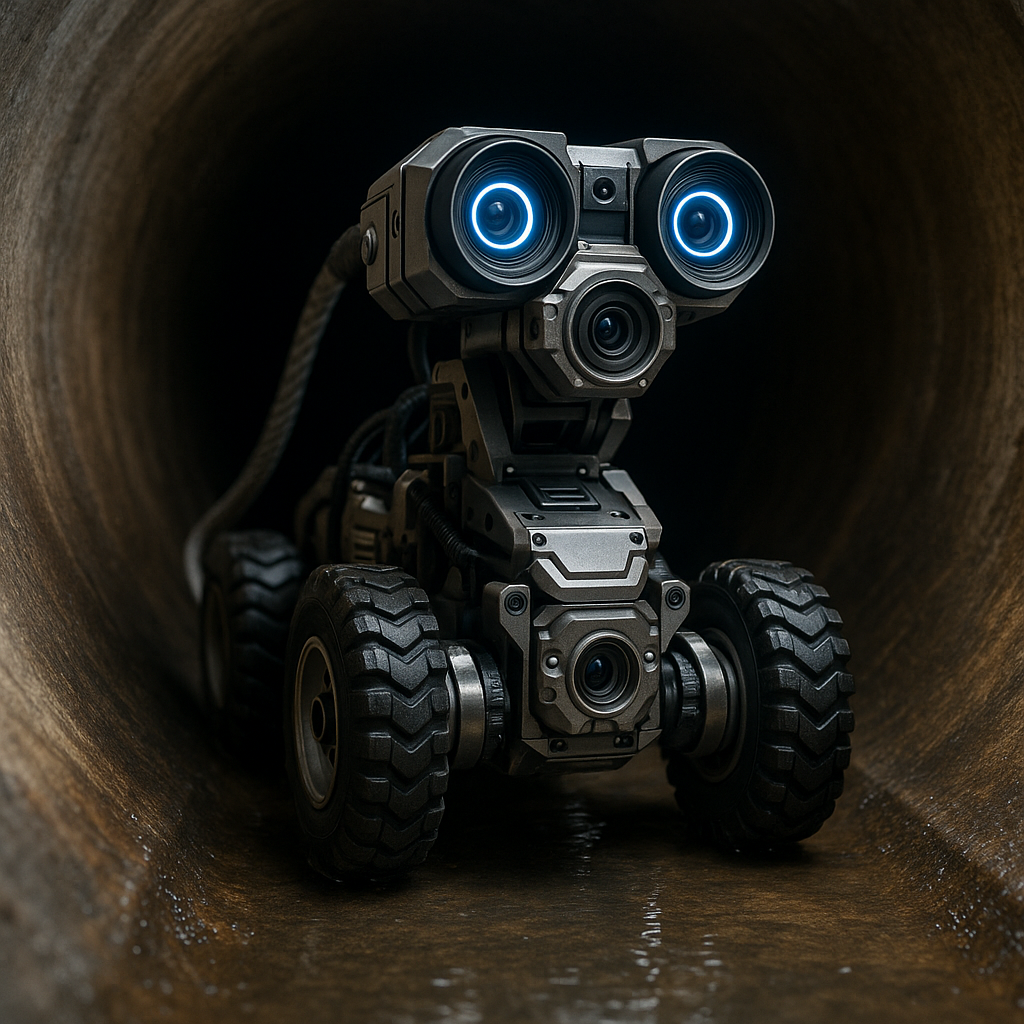Enhancing Sewer Inspection Quality Control in 2024
Explore how robotics and AI redefine sewer inspection quality control, driving accuracy and efficiency in 2024.

Enhancing Sewer Inspection Quality Control in 2024
Introduction
In 2024, the landscape of sewer inspection is undergoing significant transformation, driven by cutting-edge technologies such as robotics, AI-powered defect detection, and high-definition CCTV systems. These advancements are not only enhancing the accuracy and efficiency of inspections but also improving safety standards by minimizing human exposure to hazardous environments.
New Technologies and Equipment
Robotics and HD CCTV Systems
Robotic crawlers equipped with pan-and-tilt HD cameras and sensors have become a staple in modern sewer inspections. These devices provide comprehensive views of the pipe interiors, allowing for detailed visual assessments. The integration of high-definition CCTV systems ensures that even the smallest defects are visible and accurately documented.
AI-Powered Defect Detection
AI algorithms are revolutionizing the way sewer inspections are conducted. By analyzing video feeds in real-time, these algorithms can automatically identify cracks, blockages, and structural defects, reducing the possibility of human error and expediting decision-making processes. This automation is crucial for maintaining consistency and reliability in inspection results.
Autonomous Robots with 3D Mapping
Autonomous robots equipped with 3D mapping capabilities and GIS integration are providing spatial analysis and infrastructure mapping. This technological advancement supports predictive maintenance, enabling sewer systems to be managed proactively rather than reactively.
Industry Regulations and Standards
While specific regulatory updates for 2024 are not detailed, compliance with existing local and federal regulations remains a significant challenge. These regulatory frameworks often necessitate the adoption of advanced inspection technologies, which can impose high costs and complexity on smaller operators. However, they also drive innovation and demand for enhanced inspection capabilities.
Market Trends and Business Opportunities
The sewer inspection systems market is on a growth trajectory, projected to expand from USD 500 million in 2024 to USD 800 million by 2033, at a CAGR of 5.5%. This growth is fueled by smart city initiatives and the integration of AI and data analytics for predictive maintenance. Companies offering innovative, cost-effective solutions stand to benefit from these trends, although initial investment and training remain barriers to entry.
Safety Protocols and Best Practices
Robotic and remote-controlled CCTV technologies have significantly reduced the need for human entry into hazardous sewer environments, enhancing worker safety. Automated defect detection enables remote analysis, further minimizing exposure. Best practices now emphasize:
- Regular robotic inspections
- AI-driven analysis for comprehensive quality control
- Adoption of safety protocols that prioritize remote operations
Cost and Pricing Information
The adoption of advanced sewer inspection technologies requires considerable upfront investment, presenting a challenge for smaller municipalities and businesses. However, the long-term benefits, including reduced repair costs and optimized maintenance schedules, justify these investments. Pricing varies based on equipment sophistication and service scope, with market growth indicating increasing affordability.
Conclusion
The quality control of sewer inspections in 2024 is characterized by a shift toward automation, AI integration, and robotics. These technologies are pivotal in enabling more accurate, efficient, and safer inspections, supporting proactive infrastructure management. As cities worldwide embrace smart city development, the role of advanced sewer inspection technologies will continue to expand, aligning with broader trends in sustainable urban maintenance.